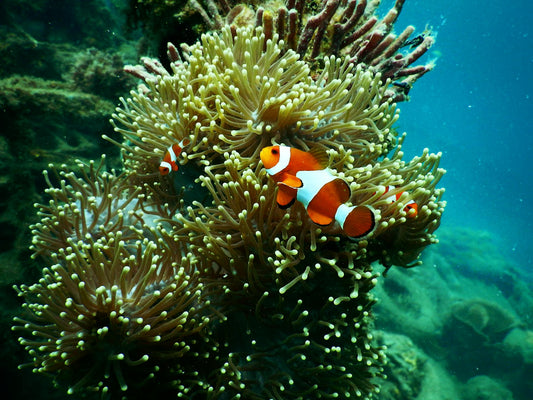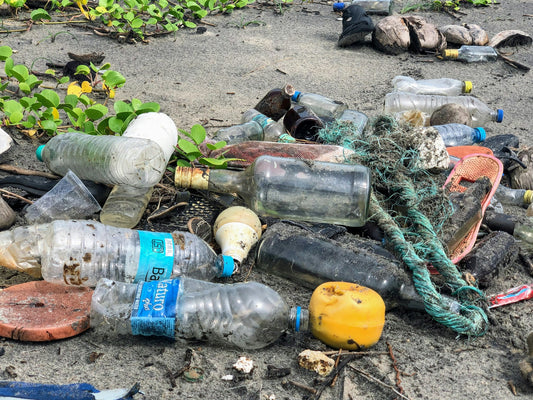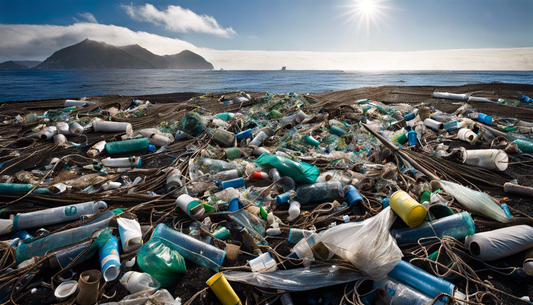Share
Plastic became a remarkable material in the second half of the twentieth century. It revolutionized the industries and people’s lives.
The practical use, strength, and affordability ensured that it became a common item used in homes and offices across the globe.
However, the same factors that contributed to the success of using plastic also led to its becoming one of the biggest environmental issues in the modern world.
Today, plastic pollution is a global problem that affects all countries in one way or another.
This blog post looks at the various ways through which the use and pollution of plastics have changed over the years, the major factors that have precipitated this change, and the various problems that individual countries are facing.
|
Read More: The 5 Most Plastic Polluting Countries in the World |
The Evolution of Plastic Production and Consumption

The production of plastic has increased exponentially in the past few decades. To put this into perspective, global plastic production has increased by more than 180 times between 190 and 2022 and currently stands at 460 million tonnes (Mt) per year.
This massive increase can be attributed to increasing population and per capita income, especially in developing countries where the use of plastic products has grown exponentially.
The rise in the use of plastics is even more dramatic. Global plastic consumption is estimated to have quadrupled in the last 30 years.
In 2019, 64% of all plastics that entered the ocean originated from products with a useful life of less than five years, including packaging (40%), consumer goods (12%), and textiles (11%).
While plastic production saw a small dip between 2019 and 2022, it is back on an all-time high. Projections estimate that the worldwide plastic production will reach 1 321 Mt by 2060, tripling again over the next 40 years.
With recycling rates only forecast to rise to 17%, these projections are nowhere short of an environmental fallout.
The Key Players in Plastic Pollution

Growing Demand:
Plastic has gained popularity because it can be used in many applications and is relatively cheap, especially in packaging, construction, and consumer products.
Mismanaged Waste:
It is estimated that 20% of plastics produced worldwide end up as litter with no chance of being recycled, burned, or disposed of in a sanitary landfill.
This mismanagement is especially so in low to middle-income countries where there are limited or no structures to manage waste.
Lack of Recycling Infrastructure:
Despite the growing trend of recycling, it is estimated that only 9% of plastic waste is effectively recycled.
Some of the areas still have poor infrastructure to support the recycling of plastics, and many of the plastics end up in landfills or in the environment.
Corporate Interests:
Many organizations, especially the food and beverage industries, have contributed to the use of plastics.
For instance, multinational companies have been producing and distributing single-use plastic sachets for commodities such as shampoo, coffee, and snacks in many developing countries.
Contributions of OECD Countries Vs. Non-OECD Countries Towards Plastic Pollution

Stats Related to Plastic Waste Generation
OECD Countries
It was also found that OECD countries account for almost half of the global plastic waste.
- The US produces about 221 kg of waste per person per year.
- European OECD countries average 114 kg per person.
- Japan and Korea produce approximately 69 kg per person.
- These countries are responsible for 14% of the overall plastic leakage into the environment, of which about 11% are macroplastics and 35% are microplastics.
Non-OECD Countries
- Non-OECD countries have experienced rapid growth in plastic consumption, reaching 3 kg per capita by 2019.
- Due to inadequate waste management infrastructure, non-OECD countries face high levels of mismanaged plastic waste.
Specific Challenges Faced By Countries
OECD Countries:
Inadequate Waste Management:
Even the most developed OECD countries face significant problems in waste management, especially in low-income districts.
This inadequacy leads to a high level of plastic pollution in the environment and ecosystems.
Increased Single-Use Plastics:
The COVID-19 pandemic also worsened the situation and led to the increased use of single-use plastics as takeaway containers and personal protective equipment.
Non-OECD Countries:
Inadequate Infrastructure:
Currently, many non-OECD countries do not have adequate waste management systems, which results in high levels of plastic leakage.
According to the study, around 22% of plastics generated in these countries end up in the environment without going through proper waste disposal channels.
Economic Constraints:
The lack of funds to implement proper waste management and recycling infrastructure ensures that plastic pollution continues to be a major issue.
|
For More Information: How Pollution Affects the Poor - And Why We Are Playing A Key Role? |
Actions Taken: Measures to Reduce the Impact

OECD Countries:
Regulatory Measures:
Currently, several OECD countries have adopted restrictions and taxes on the use of single-use plastics.
However, these measures have not been effective enough to address the issue of plastic pollution in general.
Improving Recycling Infrastructure:
There are attempts to increase the recycling ratio, and the anticipated growth in the ratio of plastic waste that is successfully recycled shows that the ratio could reach 17% by 2060.
International Cooperation:
Lower-income nations are urged to encourage OECD countries to invest in better waste management infrastructure to reduce plastic leakage.
Non-OECD Countries:
International Aid and Cooperation:
Some non-OECD countries are receiving international support to enhance waste management systems and procedures.
Policy Development:
Measures are being taken to implement policies for the control of plastic usage and enhancement of the recycling process.
However, the biggest problem is implementation because the necessary resources are lacking.
The Path Forward on Plastic Pollution
The problem of plastic pollution is one of the most urgent and pressing issues on a global scale, demanding the actions of governments, companies, and ordinary people.
The production and use of plastics have tremendously grown in the past few decades, leading to a flood of plastics that our current waste management systems cannot contain.
The challenges are real and immense, but they are not unattainable. Government policies should incorporate increased control on plastic manufacturing and disposal, especially in areas where waste is poorly managed.
Were you aware of the big differences between countries when it comes to plastic pollution? Leave a comment below and engage in the discussion!
We hope you enjoyed this article. If you want to read more like this, make sure to check out our Blog and follow us on Instagram. If you are interested in truly sustainable products, check out our Shop.








